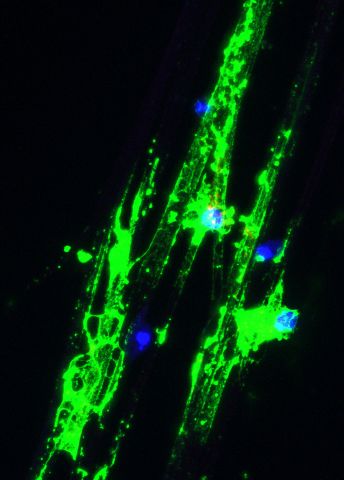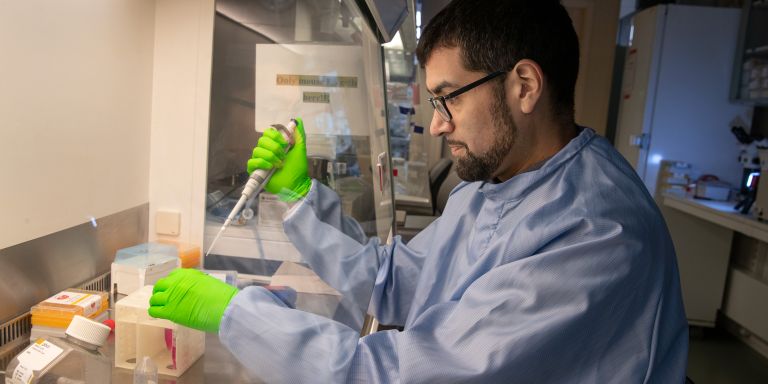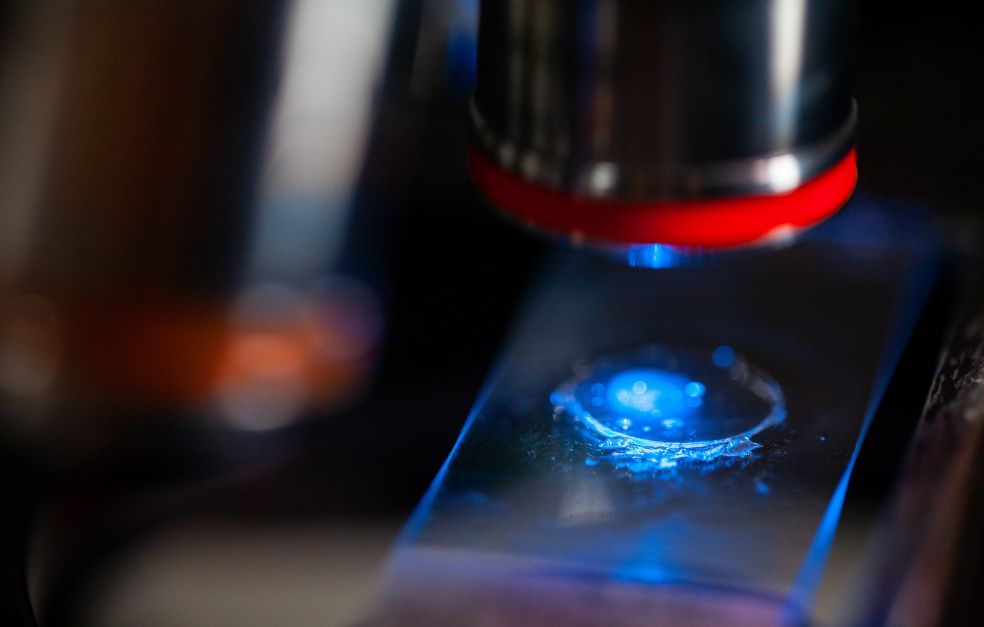
Project Grant 2019
Insights on the role of oligodendroglia in the origin and progression of multiple sclerosis
Principal investigator:
Professor Gonçalo Castelo Branco
Co-investigators:
Karolinska Institutet
Tomas Olsson
Institution:
Karolinska Institutet
Grant in SEK:
SEK 34,000,000 over five years
Across the world some 2.5 million people live with multiple sclerosis – MS. The disease causes the body’s white blood cells to attack the myelin that sheaths the nerve cell axons in the brain.
Myelin is a lipid-rich substance that insulates the nerve fibers, very much like the insulation surrounding electrical wiring. The insulation enables the electric nerve signals to travel at a faster speed. But when myelin is damaged, communication is hampered, and the signals slow down, causing the symptoms suffered by MS patients.
But remissions do occur. The cells that synthesize myelin – oligodendrocytes- can be replenished periodically by their precursor cells, with resulting improvements.
“But remissions tail off in many patients, and symptoms become chronic. Oligodendrocytes are not any longer regenerated as effectively, and their precursors might also disappear in some lesions,” says Gonçalo Castelo Branco, who is leading the project.
The researchers want to find out why this is happening. The answer may lie in recently discovered interplay between oligodendroglia and immune cells.
Commonest cell type
Oligodendroglia are one of the commonest cell types in the brain and spinal cord. In 2016 Castelo Branco’s research team published a study revealing a greater diversity of oligodendroglia than had previously been realized.
Two years later they were able to show that some oligodendroglia had the ability to change upon interaction with immune cells.
“It was really unexpected. Some of the oligodendrocytes, and also the precursor cells, had begun to mimic the immune cells. Genes that were activated in the immune cells were also switched on by those cells.”
The change gave them the ability to acquire some of the properties of immune cells. Among other things, they could clear away damaged myelin and also communicate with the immune cells. The researchers hope that the new project will give them a better understanding of why this happens and what the implications are for the disease.
Heroes and villains
Clues include a molecule that immune cells secrete that has been found to impact oligodendroglia. This has been also confirmed by a U.S. research team, which has also demonstrated that the secretion compromises the ability to synthesize myelin.
“But we don’t know for sure whether altered functions of the “immune” oligodendroglia increase the pace at which the disease progresses, or slow it down.”
The researchers have several opposing theories: either the cells attempt to mimic immune system cells to get them to cease their attack or they join in the attack, rendering the disease more aggressive as they do so.
“The discovery that oligodendroglia mimic immune cells opened up a new field. We’re now examining this issue in collaboration with another research team, which yields important synergies. Together we will be able to improve our understanding,” comments Castelo Branco.
The project, which is being supported by Knut and Alice Wallenberg Foundation, also involves Tomas Olsson’s research team, whose expertise lies in clinical and experimental neuroimmunology. The emphasis of their research, too, is on multiple sclerosis.
Key tool
One of the most important tools used by the researchers is single-cell sequencing. The technique enables them to analyze the RNA of individual cells to see which genes are active in the cell. One of those first developing this technology is Sten Linnarsson, also at KI, and a collaborator of the Castelo Branco’s team.
“The technologies needed to carry out this research have only recently become available. They provide us with large quantities of information, which is a challenge in itself. So the team needs to have members with expertise in bioinformatics.”
Another challenge is the difficulty of performing studies on human subjects. So far the research team has concentrated on mouse models, which have many similarities with humans. Some experiments have also been performed on archived tissue from deceased MS sufferers.
“If we are to understand the mechanisms involved, it’s essential to use models, but we must constantly bear in mind that there are differences. Performing studies of this kind on living human subjects is virtually impossible.
Playing a greater part than thought
Over the past few decades scientists have learnt a lot more about how the brain works. One example of this is how neurodegenerative diseases such as Parkinson’s, Alzheimer’s and MS impact not only one but various distinct cell types.
“In recent years several articles have been published on the part played by oligodendroglia in Parkinson’s and Alzheimer’s. We don’t have the answers yet, but they seem to be more important than was previously believed. There are also other kinds of cells, such as astrocytes, that may be more involved than we thought.”
New knowledge may lead to new therapies for MS. Current treatments target immune cells, but the future may see therapies that target oligodendroglia.
“Our long-term goal is for our findings to help in the development of better drugs that are capable of slowing or even halting the progress of multiple sclerosis. It’s a challenge, but a highly stimulating one,” says Castelo Branco.
Text Magnus Trogen Pahlén
Translation Maxwell Arding
Photo Magnus Bergström





